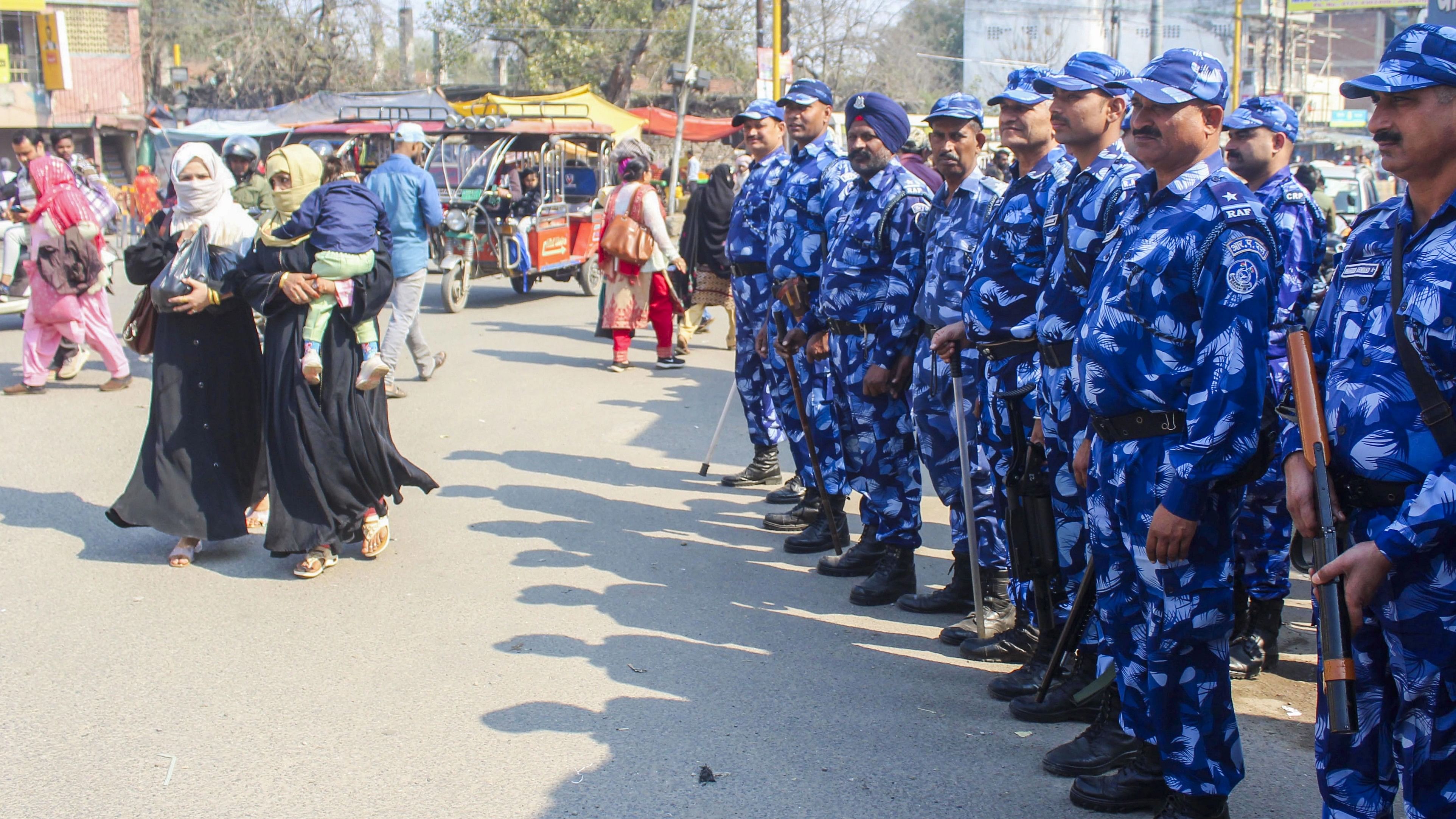
Rapid Action Force (RAF) personnel deployed in a sensitive area, a day after violence in Uttarakhand's Haldwani over the demolition of an 'illegally built' madrasa, in Meerut, Friday, February 9, 2024.
Credit: PTI Photo
Following a demolition operation in Uttarakhand's Banbhoolpura area, where a mosque and a madrasa reportedly stood on Nazool land, violence erupted with stones being thrown and several vehicles set ablaze. The incident took place in Haldwani district.
In response to the escalating tension, Chief Minister Pushkar Singh Dhami convened a high-level meeting and issued orders to law enforcement to shoot "rioters" on sight, as stated by the state information department.
It is being said that the decision to issue "shoot-at-sight" orders in the aftermath of the illegal demolition drive reflects a disturbing attempt to target innocent Muslim individuals, particularly women, who had gathered in large numbers to protest against demolition.
What does "shoot-at-sight" mean?
A "shoot-at-sight" order signifies the authorisation of law enforcement to use lethal force without due process. It allows police to fire at individuals suspected of involvement in unlawful activities, without requiring a formal complaint or a directive from a magistrate.
Constitutional provisions allowing "shoot-at-sight"
The authority to issue "shoot-at-sight" orders is derived from legal provisions related to arrest and the prevention of offenses, as outlined in Sections 41-60 and Sections 149-152 of the CrPC, 1973.
Specifically, Section 46(2) of the CrPC permits the use of force during the arrest of an individual. If someone "forcibly resists arrest or attempts to evade it, the police officer or any other person may use all necessary means to effect the arrest." However, Section 46(3) imposes a restriction by stating that this authority does not extend to causing the death of a person who is not accused of an offense punishable by death or life imprisonment.
Denial of the right to life and liberty
The 'shoot-at-sight' policy, advocated by some, is seen as necessary to empower the police in situations where protests escalate into violence, endangering public peace. Advocates of the policy often cite provisions in Indian criminal law that allow for private self-defence.
However, the Supreme Court has emphasised that even in such situations of unrest, law enforcement must exercise restraint and avoid disproportionate force, ensuring that individual's human rights and dignity are respected. Therefore, any use of force by police must adhere to the principle of proportionality.
Issuing a shoot-at-sight order without a formal investigation into an individual's guilt is a clear violation of the right to life and liberty guaranteed by the Indian Constitution.
Article 21 states that no person shall be deprived of their life or personal liberty. This right encompasses the right to a fair trial to determine guilt and impose penalties that restrict individual rights under this Article.
Thus, granting law enforcement the authority to shoot without due process denies individuals the opportunity to undergo a fair trial to establish their innocence or guilt.